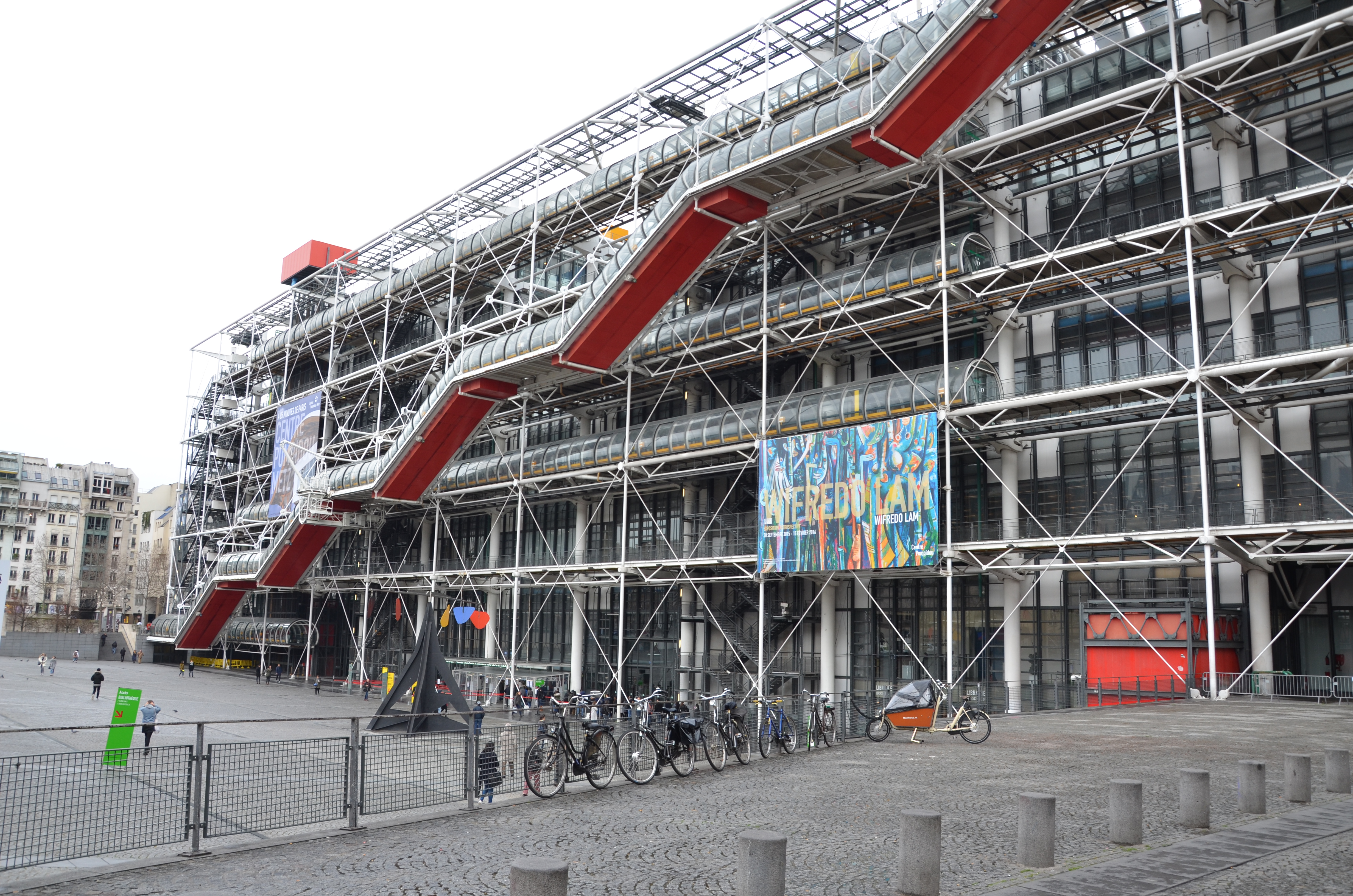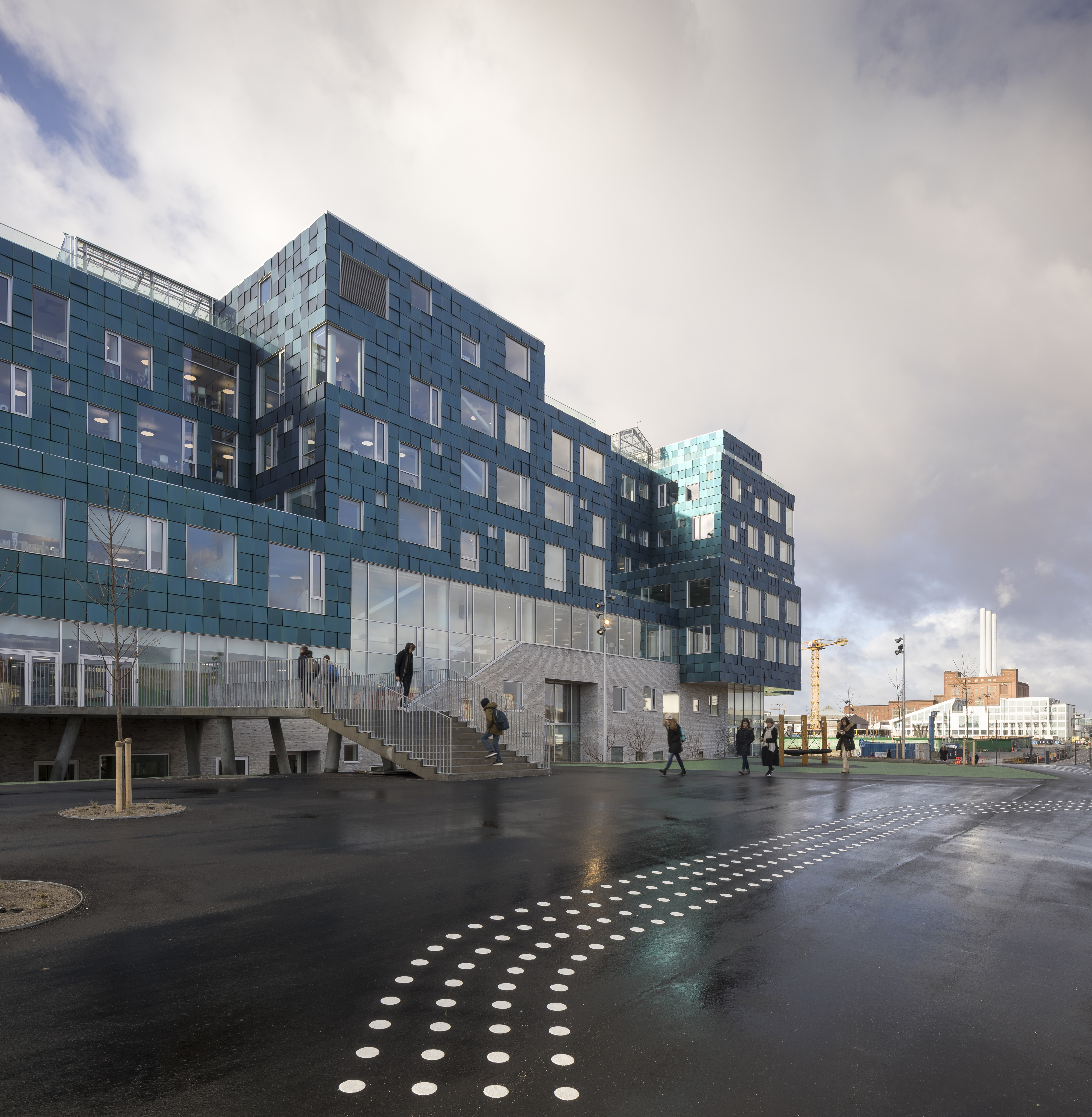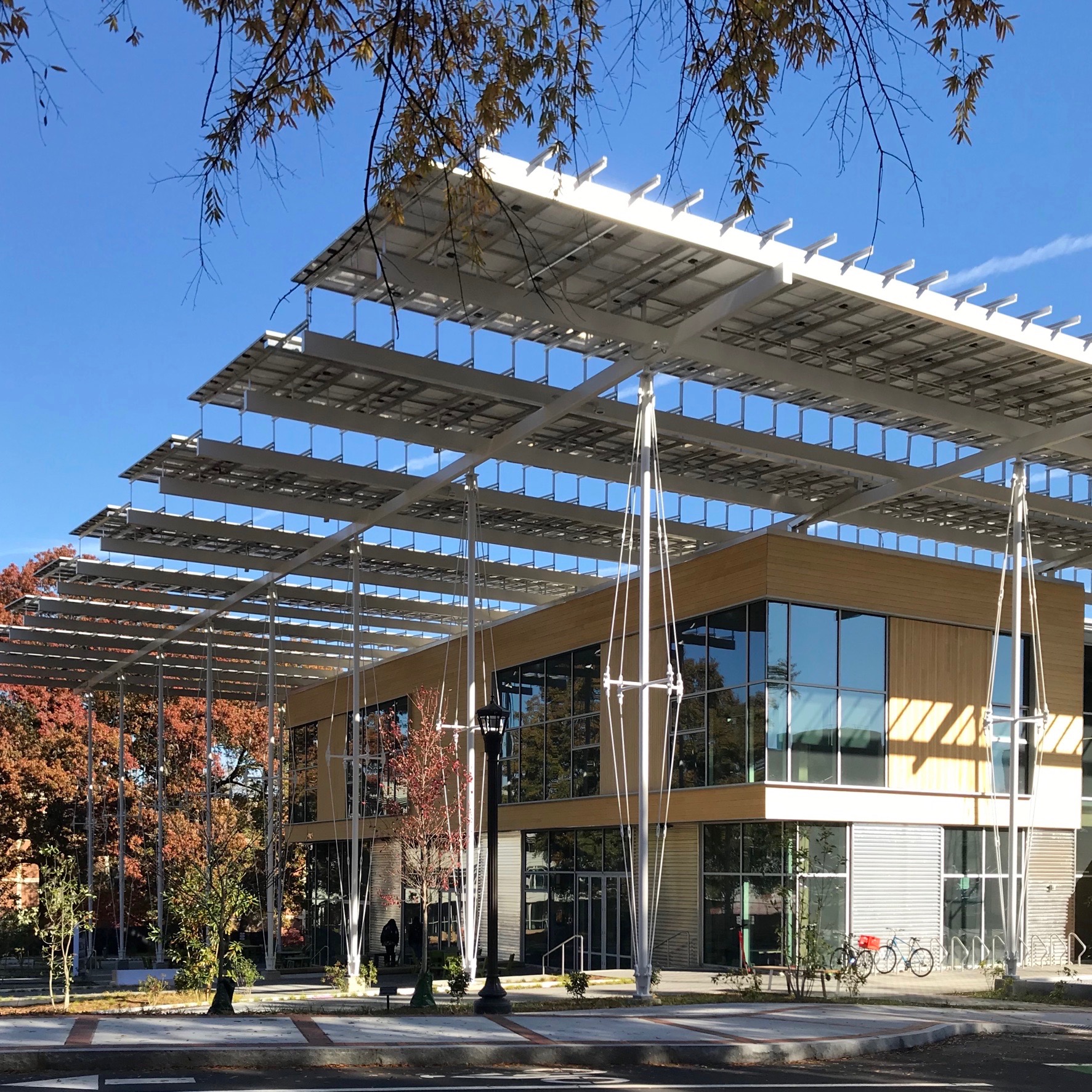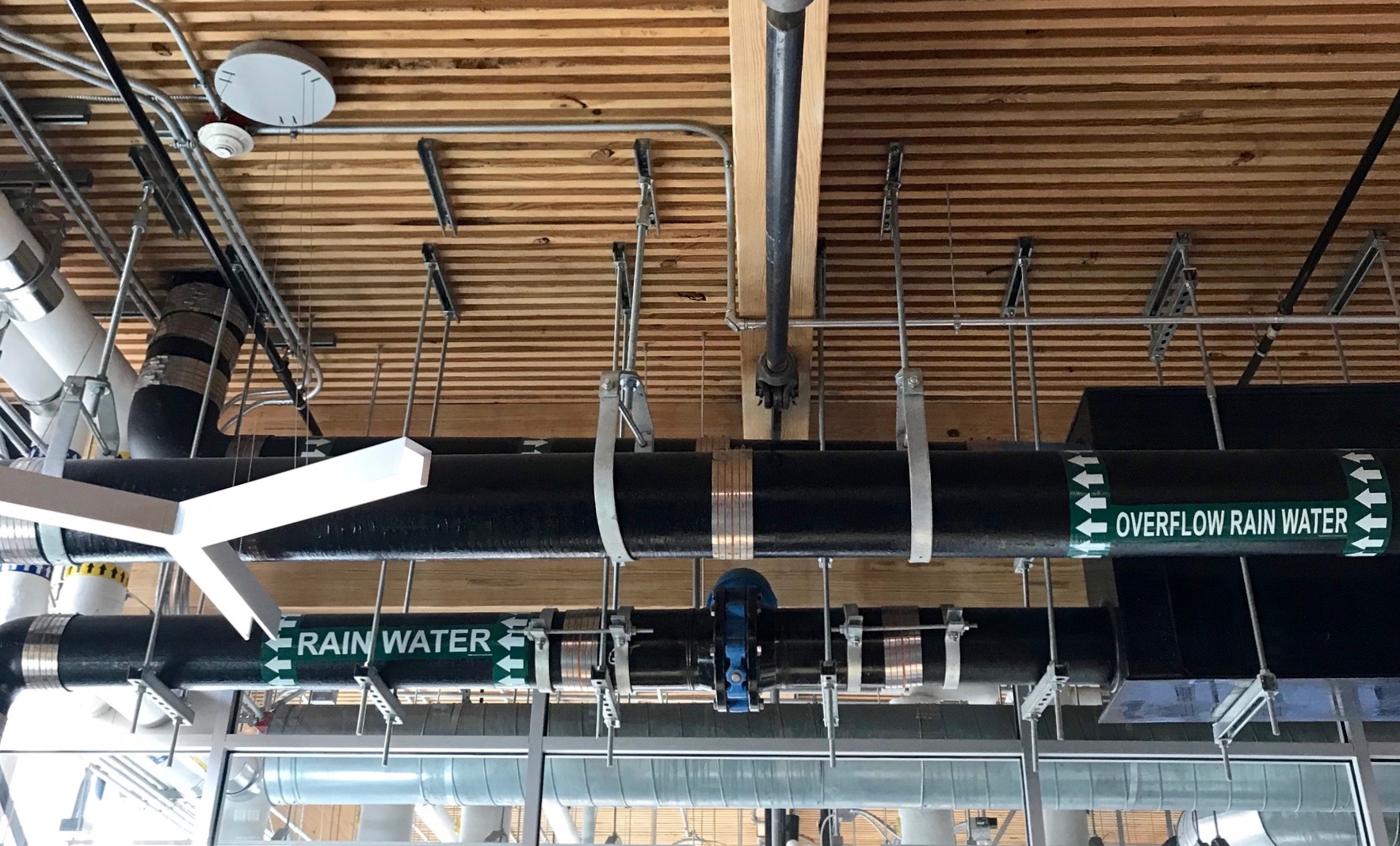The inside-out revolution has a start date: January 31, 1977. That is the day the Georges Pompidou National Center of Art and Culture opened in Paris. It marks the first-time mechanical systems – such as pipes, channels, valves and fittings – embraced a building’s envelope and became the protagonist of architecture.

Centre Pompidou’s vertical path of exterior escalators. Photo: Nora Santonastaso / design outfit
When we think of mechanical systems, it is usually when we are trying figuring out how to conceal them. Scroll through any website devoted to architecture and you’ll find streams of images depicting minimalist interiors that appear unburdened by the need for bulky air ducts or electrical circuitry. On the other hand, when a building’s exoskeleton is featured, it proposes the design as avant-garde – a statement on high-tech performance above all else.
The origin of this seen/unseen divide goes back to Centre Pompidou. Designed by Renzo Piano, Richard Rogers and Gianfranco Franchini, the celebrated cultural complex was the first of its kind to expose the building’s inner workings as part of the architecture, turning its facades into a colourful, well-organized skin: yellow piping for electricity, red for elevators and escalators, green for water and blue for air. In short, the functional apparatuses are declared without aesthetic qualms and its architecture part of a larger machine. If you’ve visited, you have likely traversed the exterior escalator tubes that lead to the rooftop and take in panoramic views on each floor.
Jump ahead 40 years and the Pompidou’s radical embrace of function as form has become especially prevalent in buildings championing cutting-edge green technology. Copenhagen’s International School designed by C. F. Møller Architects is one such project. Completed in 2017, the school integrates an array of energy-efficient attributes that encourage a dialogue between the building and the people who use it.

The Copenhagen International School by Danish firm C.F. Møller Architects. The entire façade is covered in photovoltaic panels. Photo: Adam Mørk
Its cladding is made up of 1,200 solar panels that cover multiple facades. While the photovoltaics are there to supply more than half of the building’s electrical needs, they also provide a visually harmonious three-dimensional design characterized by a recurring geometric pattern.
The Kendeda Building at the Georgia Institute of Technology in Atlanta, Georgia, has also won accolades for its inside-out approach. Like C. F. Møller’s international school, it relishes in showing off as many integrated eco-systems as possible. The goal is to present the building itself as an educational tool for green building.

Kendeda Building for Innovative Sustainable Design in Atlanta uses just one-third the energy of a comparable building. Photo: Catherine Osborne
Many of its features are purposefully bold, including an oversized solar panel canopy that also funnels rainwater into holding tanks for the irrigation system and other building functions. What cannot be understood by looking is explained with signage. For instance, anyone using the washrooms will learn the toilets are composting, and the atrium’s wooden flooring is made from salvaged off-cuts. The surrounding landscape of floral gardens are also clearly explained to be in the service of bees that live on the building’s rooftop apiary.

Pipes and mechanical systems inside the Kendeda Building are clearly labelled to allow visitors and students to understand how they operate. Photo: Catherine Osborne
Can you imagine what it must be like for students to see and understand how a net-positive building works and feels as they study inside one? How will that experience influence their ideas of what future cities should be like? Among the most inspiring aspects of architecture’s inside-out revolution, which began all those years ago in Paris, is its cascading effect, by simply revelling outwardly how a building works.
Written by Catherine Osborne and based on an article by Nora Santonastaso of design | outfit